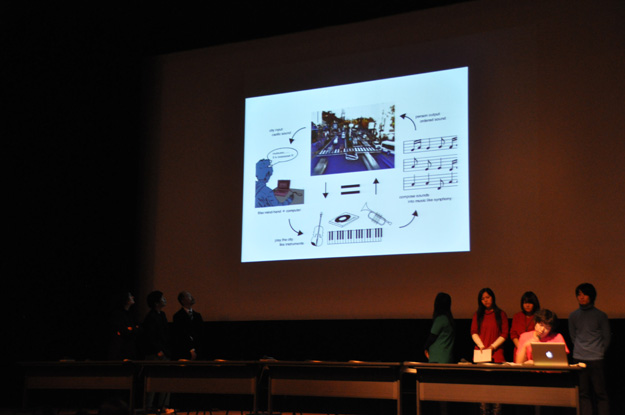
The Connected within the Disconnected | Nagoya Discovered through Design
How can we imagine a more ample version of the city we live in, Design City Nagoya?
How can we convey that rich image into a more abundant real day-to-day life?
A city is comprised of a variety of layers and facets: --- the idiosyncrasies of geography, time and area; visible and invisible; diffused information and information hidden away. Viewing a city from diverse viewpoints, you will see that its past and present begin to overlap, and different places begin to resonate with one another.
What aspect of this city do you want to convey the most now? For what parts do you feel empathy? By conducting fieldwork vertically and horizontally, we will explore a DNA that lurks deep in Nagoya, and design a mechanism that takes part in the city.
vitamin N
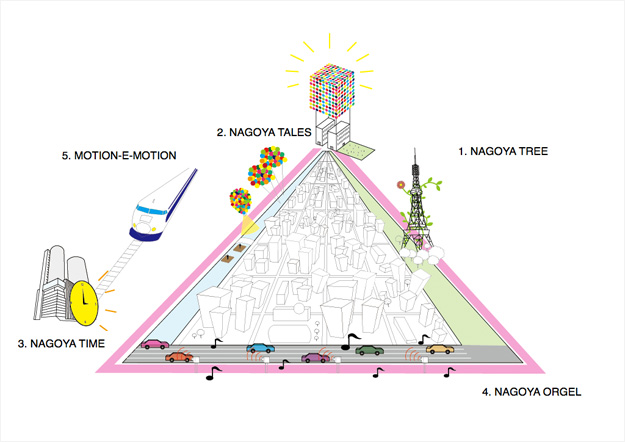
“Vitamin N” is a kind of nutritional supplement that promotes fondness for Nagoya among visitors and citizens, as well as the vigor and style of the city itself. There are five types, N1 through N5, which are administered in various places in the city. At each site, people can experience the various layers of Nagoya’s past, present and future. Video from each site is projected via internal LEDs on huge balloon-like screens set up in spaces near Nagoya Castle.
vitamin N1: NAGOYA TREE
Any Nagoyan who has lost a member of the family or who is blessed with a newborn or a new marriage during the year will plant an ivy seedling at the base of Nagoya’s TV tower [familiar as a symbol of the city]. Each year, a different color of ivy seedlings will be provided for planting, creating layers of color, and each person who plants a seedling will thus be blended into the unbroken context of the city of Nagoya, sharing a visible connection with the others.
vitamin N2: NAGOYA TALES
Nagoya has developed in two ways: revolving either around the Hori River, a manmade canal excavated in 1610, or around main thoroughfares like Hirokoji-dori and Otsu-dori. By projecting the images of both its past and future onto the present of the city, “Vitamin N2” will show these two paths of development existing in parallel, blazing the way to the future.
vitamin N3: NAGOYA CLOCK
We’ll make a clock that collates a variety of Nagoya scenes. It will show the streets and real-time activity, enabling us to discover a new Nagoya and recognize the live connections within the city and among its residents and visitors. Through this clock, the words and ideas of citizens will also be dispatched, registering the image of a bright future.
vitamin N4: NAGOYA ORGEL
Using a sensor like those of the Orbis cameras that record speed violations on the expressway, “Vitamin N4” will detect road conditions and translate them into staff notations, transforming the city into a virtual musical instrument. This will mitigate the confusion caused by multi-lane roads and heavy traffic, bringing harmony to Nagoya.
vitamin N5: MOTION-E-MOTION
Through the installation of LED monitors both within and outside the Shinkan-sen [bullet train], passengers will share mental activity, increasing mutual empathy.

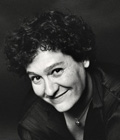
Gala Fernández
Designer
Gala Fernández was born in Madrid in 1969.
She studied art and design at the Universidad Complutense in Madrid and industrial design at the Istituto Europeo di Design in Milan.
She’s been teaching, coordinating and directing courses at the Istituto Europeo de Design in Madrid since 1995 until now. She worked for Fabrica, the Benetton Group communication research centre, coordinating the design department with Jaime Hayón from 2000 to 2004.During that period she was the head of “Fabrica Features” (Fabrica’s commercial and cultural spaces) in Bologna and Lisbone.
She runs her own studio GalaFM in Madrid working within a range of multidisciplinary activities in the fields of art and design, from curatorship to production, distribution and a number of varied services such as interior and product design, garphic design and publishing, owns La permanente design gallery, she coordinates the European Design Labs at the IED in Madrid and is the responsible of the Boisbuchet Summer Master Programme, France.
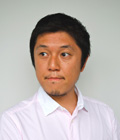
Keisuke Kitagawa
Associate Professor, Graduate School of Engineering, Nagoya Institute of Technology
Born on March 26, 1974 to parents who owned a Japanese confectionary business. Kitagawa’s specialties include architectural planning and design, contemporary architecture, city planning, spatial information theory, subculture theory and “Nagoya” theory. Graduated from the Faculty of Engineering of the National Nagoya Institute of Technology in 1996. In 1999, worked at Reiser + Umemoto and others. In 2001, upon completing the doctoral course at the Graduate School of Engineering, Nagoya Institute of Technology, Kitagawa received a PhD in Engineering. After moving through the positions of assistant, lecturer and assistant professor at the same university, Kitagawa is currently an associate professor at the Graduate School of Engineering, Nagoya Institute of Technology, as well as the Chief of NIT Radio. Treatises include, Special expression, elements and composition of architecture and the city on the space/images of propaganda films in the 20th century and Wagashi [Japanese sweets] and Architecture. Published reports include, Manga Coffeeshop White Paper: The Allowance of One-mat Refuge for One Person Being a Matter of Grave Concern that has Priority Over Any Social Problems (Architectural Institute of Japan, Journal of Architecture and Building Science (JABS), April, 2008) and Alternative Handbook of Environmental Design (JABS, December, 2009). Literary works include, Hypersurface Design and Technology (Shōkokusha, 2005). Awards include the TŌKAI Prize of the Architectural Institute of Japan and The Nagoya City Urban Design Prize.
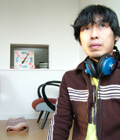
Ichiro Higashiizumi
Designer / Creative Director
Born in Tokyo and with an education in engineering, Ichiro Higashiizumi engaged in various manual labor jobs before he ultimately became a graphic designer. Since then, he has worked on films, engaged in product design, headed web-based projects and worked in space designs, among other creative projects.
As a member of the Board of Directors of the Sensorium project, Higashiizumi conducted an experimental installation project, where he utilized internet technology at multiple overseas locations. He has also done concept design for an exhibit at the Japan Science Museum and performed conceptual work for the 2002 FIFA World Cup. With the philosophy of “creating something that no one else has ever created before”, he has continued to work on everything from street- and music-rooted graphic design to total concept design. He likes things that are far away and high places.
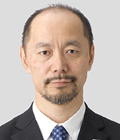
Masumi Ando
Senior Planning Director, Solution Planning Division, DENTSU INC. CHUBU
Masumi Ando works for Dentsu as a marketing strategist, communication designer and concept planner in space design, including exhibition and urban design. As the first representative of Dentsu’s Moscow office, he has experienced the extraordinary social transformation of the U.S.S.R. into Russia. Ando also worked as a concept planner for World Design Exposition Nagoya in 1989.
Yuri Abe
Nagoya University of Arts
Igor Carli
Academy of Arts, University of Split
Yusuke Itazu
Graduate School, Meijo University
Yang-yang Long
Nagoya Institute of Technology
Ayaka Sato
In-house designer, Toyoda Gosei Co., Ltd.
Yuhei Watanabe
Graduate School, Nagoya University
